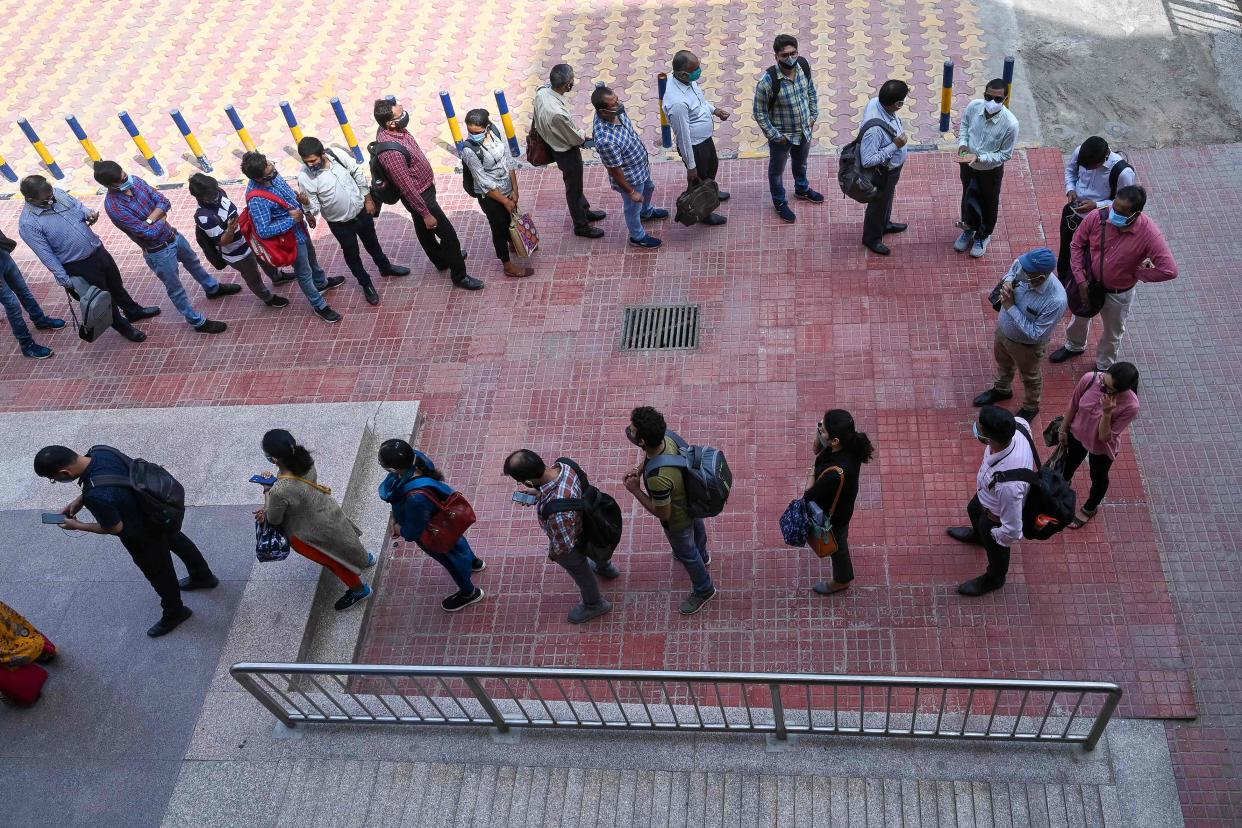Coronavirus news - live: India’s Covid infections dip but black fungus cases on rise

Commuters wait in a queue to enter a metro station following the resumption of services after seven weeks of lockdown imposed as preventive measure against the Covid-19 coronavirus at Vaishali metro station in Ghaziabad
(AFP via Getty Images)For the second day in a row, India recorded fewer than 100,000 infections in 24 hours ending Wednesday. The country recorded a surge of 92,596 new Covid infections and 2,219 deaths, according to the latest data by the health ministry.
But cases of mucormycosis, commonly referred to as “black fungus”. continue to rise across Indian states with many cities flagging a shortage of the anti-fungal injections used to treat the disease.
The health minister Harsh Vardhan said the country had more than 28,000 cases of mucormycosis with the highest cases reported in Maharashtra and Gujarat.
“The highest number of cases – 6,329 – have been recorded in Maharashtra, followed by Gujarat with 5,486, and then Madhya Pradesh, Uttar Pradesh, Rajasthan, Haryana, Karnataka, Delhi, and Andhra Pradesh,” the health minister said.
Indian states of Bihar and Andhra Pradesh, including others, are reporting a shortage of life-saving anti-fungal drugs due to patchy supply. The supply of medicine is being allocated by the federal government to the states.
Meanwhile, the UK government has dispatched extra resources to Greater Manchester and Lancashire as it sees a spike in cases in those regions. It is now less than two weeks before the country is supposed to be lifting all social distancing rules.
And a month and a half after warning Americans not to travel to most of the world, the State Department is easing a large number of travel advisories. On Tuesday it moved 58 countries and territories out of the “Do Not Travel” category and 27 were moved into the least restrictive levels of the advisory system.

